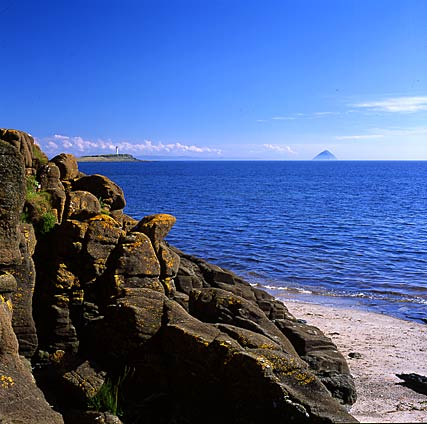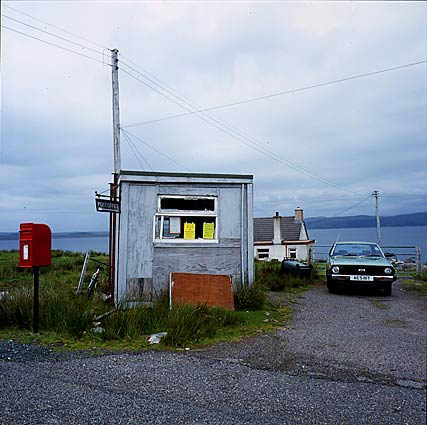

Many photographers think their gear is of prime importance. The can (and will) talk ad nauseam about which camera is the better, which lenses, which system in general, which..
In these kind of discussions there is always one who, whether laughing out loud or in compassion, says 'comparing your 35mm stuff against my medium format beauty, you will start to cry - there is simply no contest. Medium format is so much better'. And if no one tells you so, you might wonder yourself if medium format wouldn't be an option. Many professionals use it, don't they?
Therefore I decided to write an article on medium format. I intend to give the information here I was looking for, before I started to work with the format.
Since then a lot has changed though - things I cannot ignore. Since I dipped my toe in the medium format waters, the main question for the gear loving world has become: film or digital? A question that is of great importance when comparing of 35mm and medium format.
So the first chapter will be about digital. After that I will continue to speak about medium format cameras as film
cameras. Nevertheless, I will give some attention to digital backs and for what types of camera they are made. The next chapter is a survey of all possible formats and films.
Part 2 discusses all types of cameras, parts, lenses and
accessories. Part 3 starts with a table of camera types and subjects: 'what type of camera for what use'. And as a dessert I will serve a dry list of advantages and disadvantages. Maybe less than exciting - but great to have in one list.
Although I will try to inform you thoroughly, so that you may conclude 'medium format is for me' or not, I am not under the illusion that the information is complete. And I won't be entirely without prejudice either - after all, I am an enthusiastic user of medium format gear.
Why still discuss 35mm and medium format, as digital is the future? Until now the industry had to settle on either the one or the other format (apart from miniature film and large format sheets), because it is simply impossible to produce a new series of films for each new camera.
Not so with digital. There is no film needed. Each camera can have its own chip and each chip its own size. For efficiency reasons, this isn't done, but there are more sensor sizes than film sizes right now, and the number will only grow.
So, no longer a simple the two worlds of 35mm and medium format, but a range of sizes and formats.
Another reason not to talk about medium format anymore, is that a digital reflex with a 24x36mm image chip (same size as 35mm film) delivers prints with the same quality as 6x4.5 film! Within a few years medium format will be obsolete anyway! Or not so?
Because I don't work with digital myself, I cannot tell if for instance a Canon 1Ds gives the same results as a 6x4.5 negative or slide indeed. Even if that is not the case, it could be with a Canon 2D.
The notion that a full-frame digital SLR (as many people say) is too expensive, is not relevant from a technical point of view. Price is a very relative thing anyway.
What I can say about the digital is this: if a full-frame 24x36mm image chip gets you the same beautiful results as a 6x4.5 negative - how great will a 6x4.5 chip be!? These chips are being developed right now, and probably larger ones in the future.
Again there is the same quality difference between medium format and 35mm - not in film but in digital.
And yes, maybe the quality or resolution of chips can be made better, but the limits of the optics are within sight. A larger format has an advantage here, in that simply more square mm can be put behind the lens.
For the same reason a digital SLR will have better quality than a digital point&shoot - even when they share the same number of pixels. The SLR's pixels are larger, generally yielding better results.
Now I will continue to discuss medium format in general. If you want to know more about what is happening in the field of digital medium format: Luminous-landscape has a lot of tests and discussions.

There are two ways to look at the difference in format (film size). One could for example enlarge a 35mm negative and a medium format negative to 20x25cm (or whatever size you want) and then compare sharpness, details, colours etc. This is a very worthwhile thing to do.
If you haven't got a medium format camera you could use, a comparison could be made of two prints of the same 35mm negative, one 13x18cm and the other 20x30cm. Crop the larger one back to 13x18cm and then compare. The ratio of enlargement between these two prints is the same as 35mm to 6x4.5.
This method cannot adequately be shown on a computer. Therefore I give an example how all formats compare to each other. Not only the absolute size, but the width-length ratio as well.
By the way: the actual sizes can be slightly different, depending on brand and type.
Next to medium format sizes I added a 35mm frame and 4x5" sheet. Larger sheets exist - urging you to scroll...
35mm format: 24x36mm
6x4.5: 42x55mm 6x6: 55x55mm 6x7: 55x69mm
6x8: 55x76mm 6x9: 55x84mm
sheet film (View or Field Camera): 96x120mm
Panorama:
X-pan: 24x65mm 6x12: 55x120mm 6x17: 55x165mm
Films:
Medium format is 61 mm wide; the actual width, 54 to 56 mm, is governed by the camera. The edges are necessary to keep it in the camera as it should be! The film is not perforated [ I won't discuss the more specialist 70mm film here ].
All cameras work with that 54-56mm width, but the length of film they use for each frame is different: from 42mm (6x4.5) to 165mm (6x17).
These films come in two lengths: 120 film has paper at the back. This film has a length of 75 cm. 220 film doesn't have the paper backing (that is why 120 and 220 have the same diameter) and has twice the length of 120 film.
Price per frame is the same for 220 as 120 film (purchase and lab). In Europe 220 isn't used very much.
Most films are available in 35mm and medium format. Some are not available for medium format, such as some consumer films (like Fuji Sensia) and certain specialist film, like Kodak infra-red.
Here is a table with the number of frames/format and film. Some cameras give you more frames than others, even if the format is the same.
| format | 120 | 220 |
| 6x4,5 | 15 or 16 | 30 or 32 |
| 6x6 | 12 | 24 |
| 6x7 | 10 | 20 or 21 |
| 6x8 | 9 | 18 |
| 6x9 | 8 | 16 |
| 6x12 | 6 | 12 |
| 6x17 | 4 | 8 |
- Scotland, camping with a Bronica 6x6 the Bronica EC and my way of working. Published in Camera Magazine nr. 3/2002.
- Rollei 6008
This article is written by Wim van Velzen, © 2003.
Comments on the article and photographs are welcome!The landscape photographs shown here and lots more are put in several portfolios! More wedding photos can be found in the wedding galleries.
It is also possible to order landscape prints or to use them editorially or commercially.